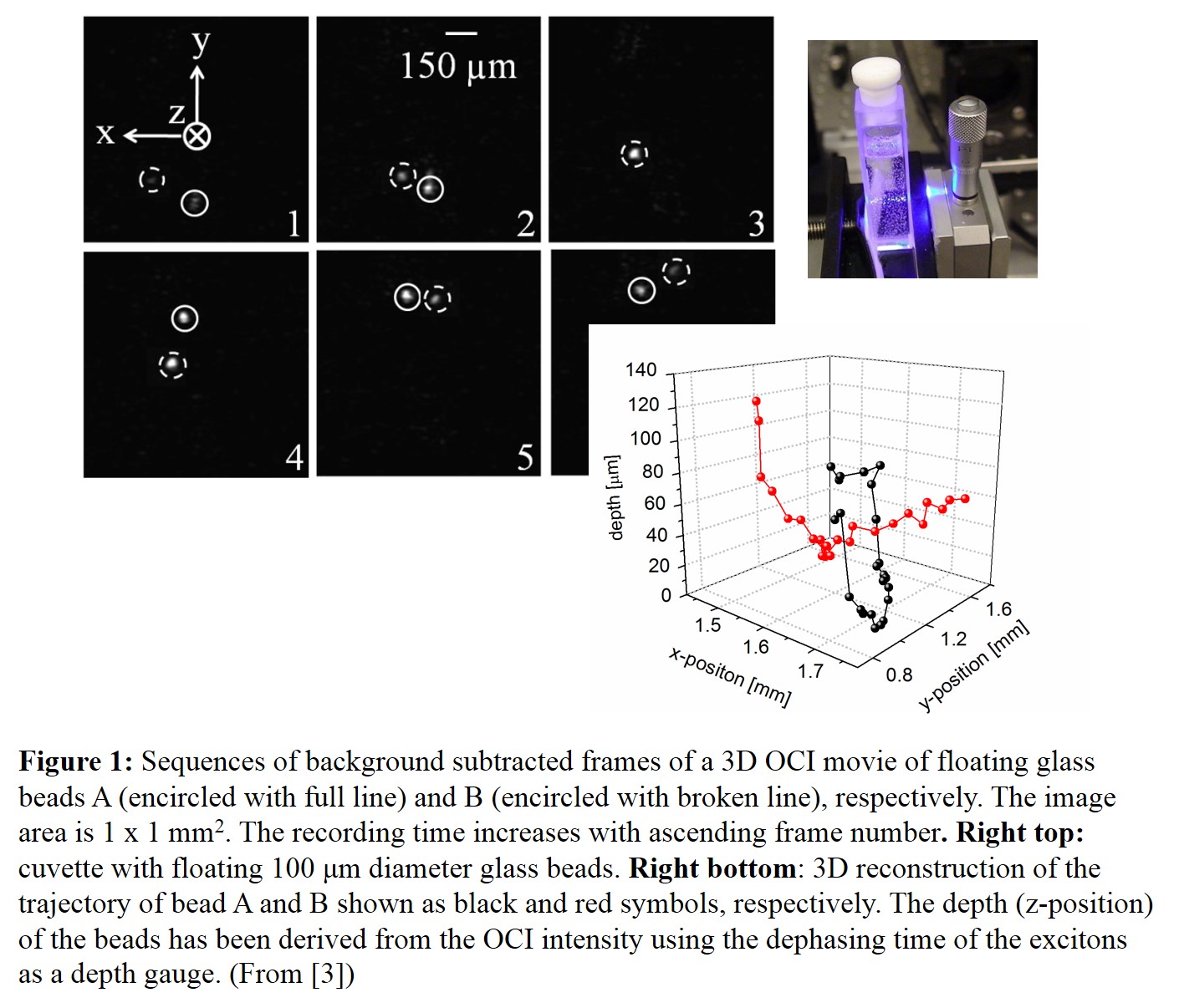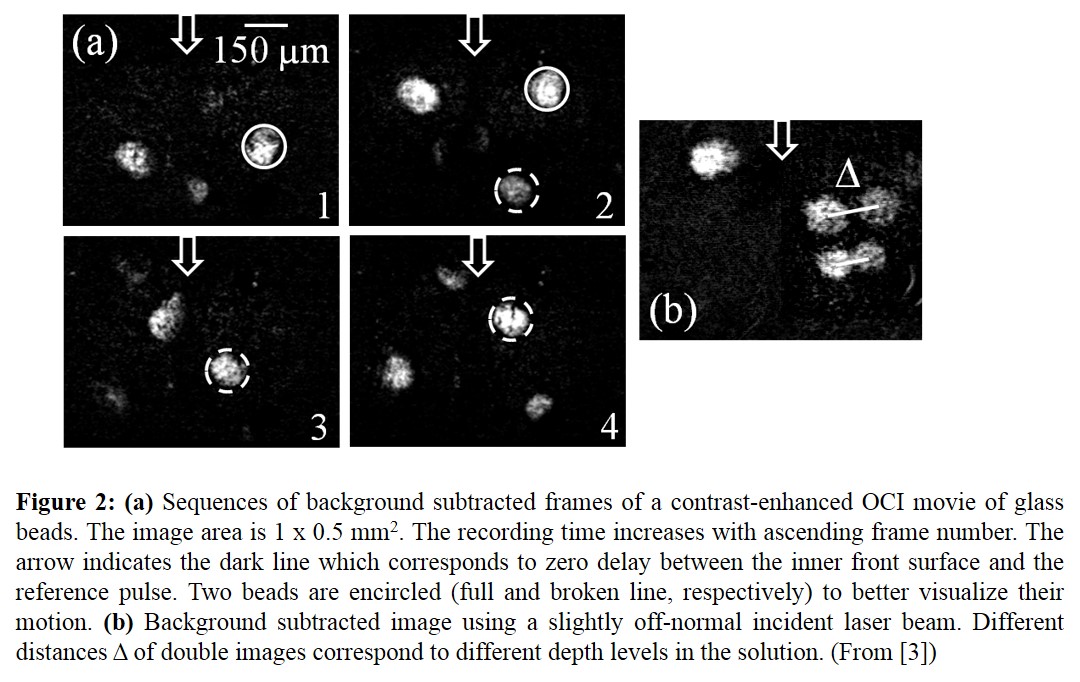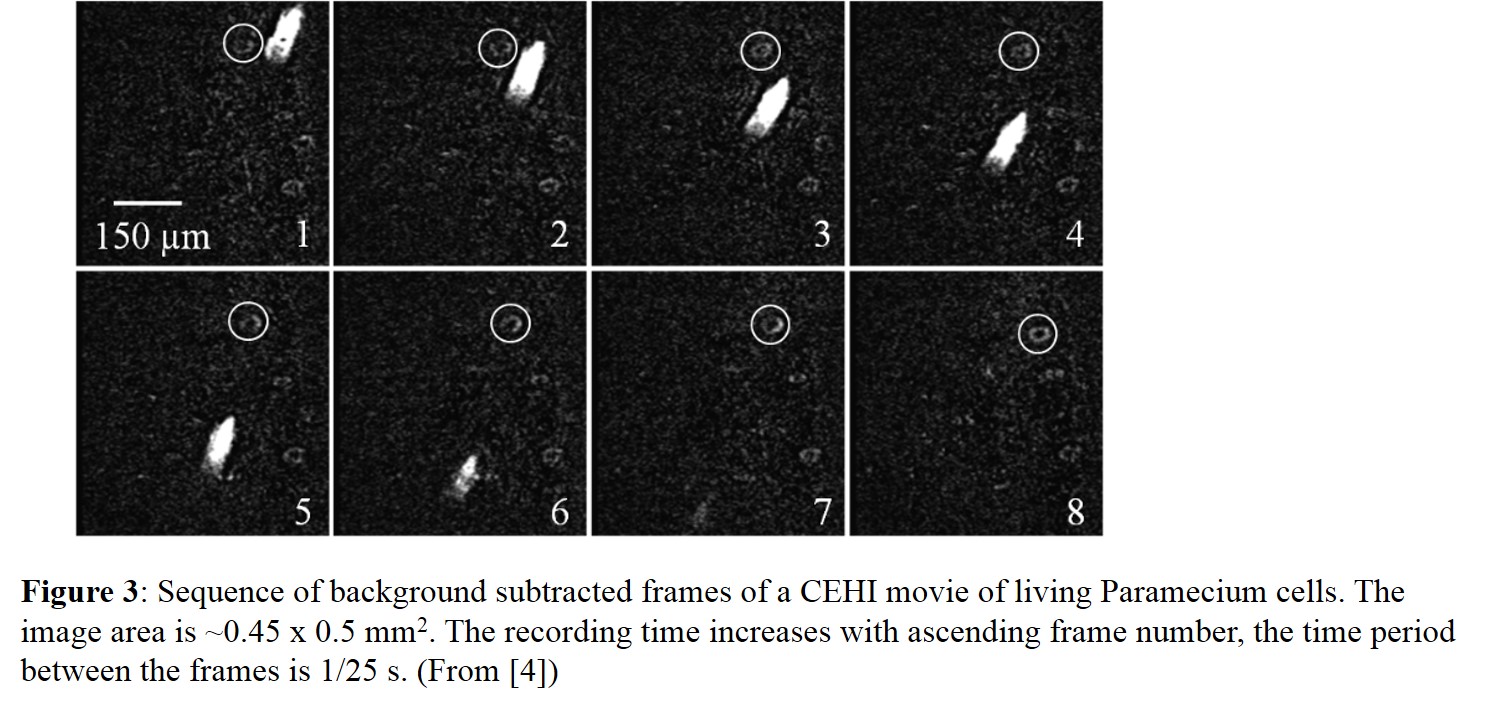Real-time holographic imaging using PCP quantum wells
We discovered a phase coherent photorefractive (PCP) effect in ZnSe quantum wells (QWs) using ultrashort light pulses1. This all-optical effect is attributed to the formation of an electron grating within the QW due to the interference of coherent excitons. The stored light information can be released by a delayed reading (probe) pulse at a later time. This new storage capability as well as the high diffraction efficiency and fast refresh time (~10 ms) at liquid nitrogen temperature makes the PCP effect attractive for holographic optical coherent imaging (OCI) with a depth resolution down to several micrometers. We demonstrated depth-resolved 3D single-shot OCI on still2 and moving objects (see Fig. 13) and further demonstrated imaging of moving objects (see Fig. 23) and of living unicellular organisms (see Fig. 34) using a complementary contrast-enhanced holographic imaging (CEHI) technique. CEHI has the potential to study e.g. the influence of drugs and toxic materials as well as of electric and magnetic fields on such organisms in a real 3D environment.



1H. P. Wagner, S. Tripathy, H.-P. Tranitz, W, Langbein, Phase coherent photorefractivity in ZnSe single quantum well, Phys. Rev. Lett. 94, 147402 (2005).
2A. Kabir, A. M. Ajward, H. P. Wagner, Holographic imaging using the phase coherent photorefractive effect in ZnSe quantum wells, Appl. Phys. Lett. 93, 063504 (2008).
3Reprinted with permission from A. Kabir, A. Dongol, X. Wang, and H. P. Wagner, Real-time single-shot three-dimensional and contrast-enhanced optical coherence imaging using phase coherent photorefractive quantum wells, Appl. Phys. Lett. 97, 251116 (2010), Copyright 2010, AIP Publishing LLC.
4Reprinted with permission from A. Dongol, J. Thompson, X. Wang, H. Schmitzer, D. Tierney and H. P. Wagner, Real-time contrast-enhanced holographic imaging using phase coherent photorefractive quantum wells, Optics Express 23, 12795 (2015), Copyright 2015, Optical Society of America.
